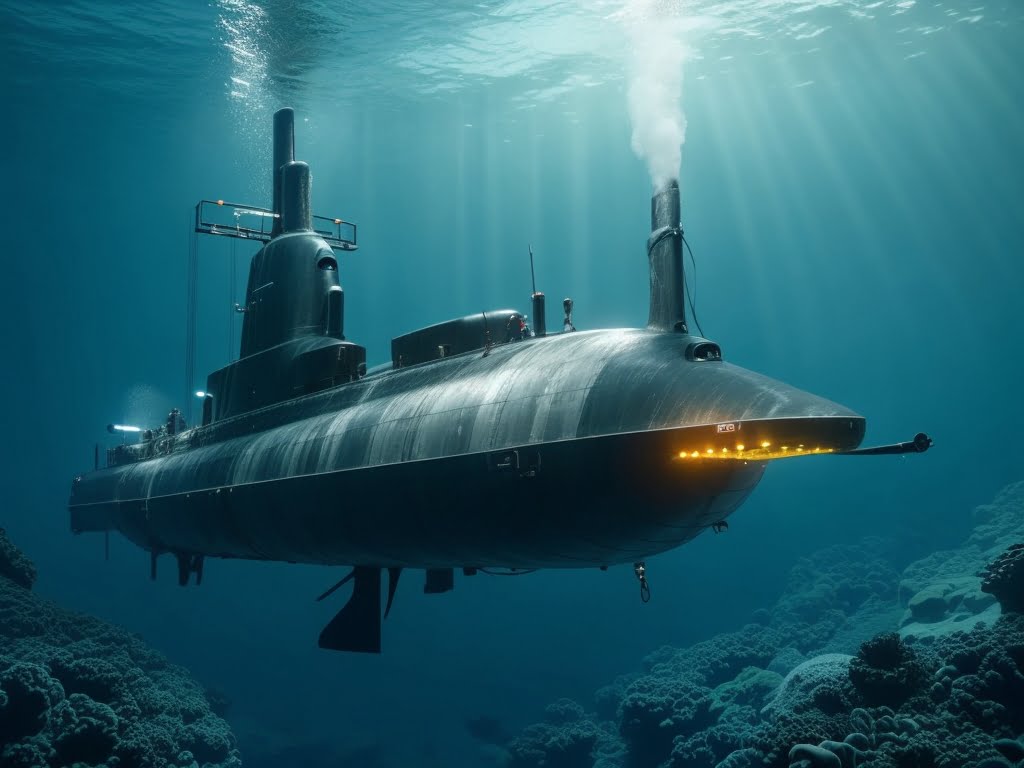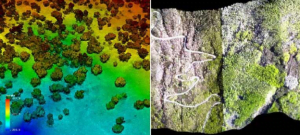A Submarine Towed Array is important for a sonar system consisting of sensors and equipment towed behind a submarine. The primary purpose of this array is to detect and track underwater objects and targets, most importantly submarines. Unlike the hull-mounted sonar systems, which are fixed to the body of the submarine, towed arrays are trailed to the back of the submarine, providing considerable advantage in terms of stealth and detection capabilities.
Components of a Towed Array
1. Hydrophones
At the heart of the towed array systems, there are hydrophones, which are nothing but underwater microphones. These sensitive sensors convert underwater acoustic signals to electrical signals, which enables the system to hear the sounds of the ocean.
2. Cables
Towed arrays are typically connected to the submarines by a series of cables that is used to transmit the electrical signals from hydrophones to the onboard signal processing equipment. These cables are carefully designed to withstand the immense pressure and harsh conditions of the deep sea.
3. Signal Processing Equipment
Once the hydrophones pick up the sounds in the water, these sounds are converted into electrical signals and sent to the submarine’s onboard signal processing equipment. This equipment then analyzes the signals, filters the background noise and creates a detailed acoustic picture of the surrounding underwater environment.
How Towed Arrays Differ from Other Sonar Systems
Towed Arrays are significantly different from their hull-mounted counterparts in several ways. Hull-mounted Sonar Systems are limited by their acoustic properties of the submarine’s body, which can interfere with the ability of the system to detect faint sounds. Towed arrays, on the other hand, are positioned away from the submarines, therefore minimizing the self noise and allowing for more sensitive and efficient detections.
History of Submarine Towed Arrays
The story of submarine towed arrays are one of continuous innovation and adaptation to the evolving conditions of underwater warfare.
A. Early Developments in Towed Array Technology
The origin of the towed array can be traced back to the times of world war II, when the submarines used primitive, manually deployed sonar devices called ASDIC Sonar to detect the enemy vessels. These early systems were basic compared to today’s advanced technology, but these systems marked the beginning of a new era in submarine Warfare.
B. Milestones in the Evolution of Towed Arrays
The development of the towed array technology didn’t stop after World War II, it continued throughout the Cold War, with both NATO and the Warsaw pact nations making significant improvements to it. These arrays evolved from a basic listening device to a complex system, capable of detecting and tracking multiple targets at the same time.
C. Notable Historical Applications
One of the most famous incidents of the towed arrays in action was at the time of the Cold War’s “cat and mouse” games between American and Soviet submarines. The Towed Array system allowed these submarines to engage in a deadly game of Hide-And-Seek beneath the waves, with each side trying to escape and out detect Each other.
How Submarine Towed Arrays Work

A. The Physics of Underwater Sound Detection
Sound travels more efficiently through water than in ari, thus making it an ideal medium for communication and detection. When an object generates sound waves underwater, it creates a pressure wave that can propagate via the water. These pressure waves are what hydrophones in a towed array picks up.
B. Towing and Deployment Mechanisms
The logistics of deploying the towed array are really complex. The array is typically stored in a reel within the submarine and it is deployed when needed. Specialized witches and machines are used to extend the array to its full length, often several Kilometers behind the submarine.
C. Data Collection and Processing
Once deployed, these hydrophones picks up sounds from the surrounding environment and these signals are transmitted via the cables to the submarine, where they undergo a highly complex processing and analyzing and filtering. This process allowed operators to distinguish between different types of sounds, such as the noise from marine life, ambient ocean noise and most importantly noise from other submarines.
Advantages of Submarine Towed Arrays
- Enhanced Detection: Submarine towed arrays are superior in target detection capabilities in various underwater environments.
- Stealthy Operations: They reduce self-noise, thus enabling submarines to operate without getting detected by other submarines.
- Versatility: Towed arrays can adapt to different ocean depths, making them useful for various naval operations.
- Effective ASW: They are important for anti-submarine warfare (ASW), helping in detecting and tracking the enemy submarines.
- Accurate Mapping: Towed arrays help in precise underwater navigation and seafloor mapping.
- Scientific Research: Towed arrays help in the scientific research of marine biology, geology, and oceanography.
- Long-Range Surveillance: They extend the surveillance range of submarines, enhancing maritime security.
Disadvantages of Submarine Towed Arrays
- Complex Deployment: Towed arrays require complex deployment procedures and equipment.
- Vulnerability to Damage: They can be easily damaged by underwater obstacles, fishing nets, or enemy actions.
- Maintenance Intensive: Regular maintenance and repairs are essential for continued usage, thus increasing operational costs.
- Costly Technology: Towed arrays are expensive to develop, install, and maintain.
- Reduced Maneuverability: The presence of a towed array restricts a submarine’s maneuverability.
- Deployment Delays: It takes time to deploy and retrieve towed arrays when needed, therefore increasing the response time for threat.
- Operational Noise: Noise generated during deployment can compromise a submarine’s stealth.
Conclusion
In conclusion, submarine towed arrays are important in modern underwater warfare and scientific explorations. These systems, equipped with hydrophone for detecting the signal, robust cables for detaching them from submarine’s body and highly advanced signal processing unit for detecting and tracking even multiple objects at the same time.



